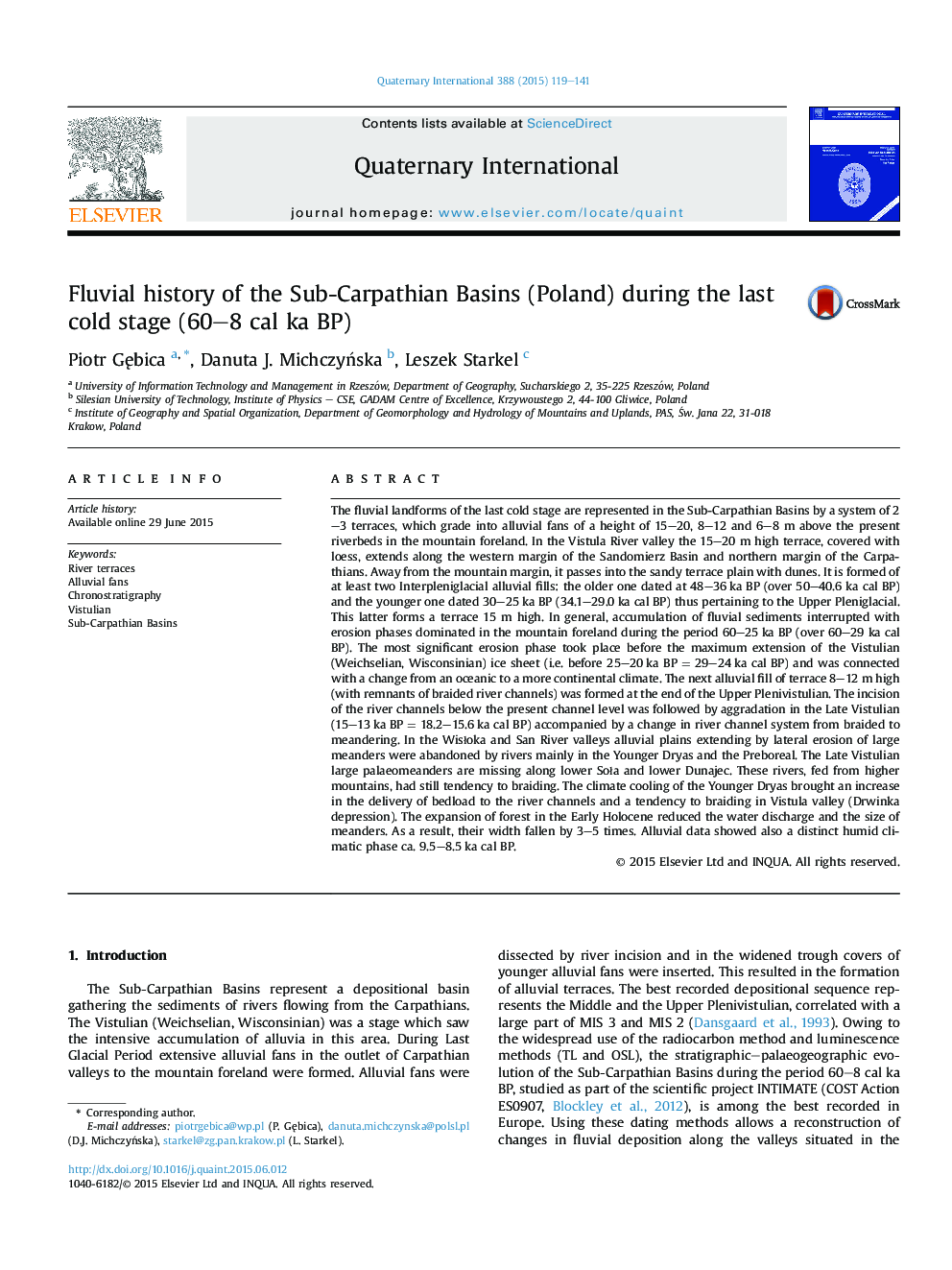| کد مقاله | کد نشریه | سال انتشار | مقاله انگلیسی | نسخه تمام متن |
|---|---|---|---|---|
| 7451410 | 1484110 | 2015 | 23 صفحه PDF | دانلود رایگان |
عنوان انگلیسی مقاله ISI
Fluvial history of the Sub-Carpathian Basins (Poland) during the last cold stage (60-8 cal ka BP)
دانلود مقاله + سفارش ترجمه
دانلود مقاله ISI انگلیسی
رایگان برای ایرانیان
کلمات کلیدی
موضوعات مرتبط
مهندسی و علوم پایه
علوم زمین و سیارات
زمین شناسی
پیش نمایش صفحه اول مقاله

چکیده انگلیسی
The fluvial landforms of the last cold stage are represented in the Sub-Carpathian Basins by a system of 2-3 terraces, which grade into alluvial fans of a height of 15-20, 8-12 and 6-8 m above the present riverbeds in the mountain foreland. In the Vistula River valley the 15-20 m high terrace, covered with loess, extends along the western margin of the Sandomierz Basin and northern margin of the Carpathians. Away from the mountain margin, it passes into the sandy terrace plain with dunes. It is formed of at least two Interpleniglacial alluvial fills: the older one dated at 48-36 ka BP (over 50-40.6 ka cal BP) and the younger one dated 30-25 ka BP (34.1-29.0 ka cal BP) thus pertaining to the Upper Pleniglacial. This latter forms a terrace 15 m high. In general, accumulation of fluvial sediments interrupted with erosion phases dominated in the mountain foreland during the period 60-25 ka BP (over 60-29 ka cal BP). The most significant erosion phase took place before the maximum extension of the Vistulian (Weichselian, Wisconsinian) ice sheet (i.e. before 25-20 ka BP = 29-24 ka cal BP) and was connected with a change from an oceanic to a more continental climate. The next alluvial fill of terrace 8-12 m high (with remnants of braided river channels) was formed at the end of the Upper Plenivistulian. The incision of the river channels below the present channel level was followed by aggradation in the Late Vistulian (15-13 ka BP = 18.2-15.6 ka cal BP) accompanied by a change in river channel system from braided to meandering. In the WisÅoka and San River valleys alluvial plains extending by lateral erosion of large meanders were abandoned by rivers mainly in the Younger Dryas and the Preboreal. The Late Vistulian large palaeomeanders are missing along lower SoÅa and lower Dunajec. These rivers, fed from higher mountains, had still tendency to braiding. The climate cooling of the Younger Dryas brought an increase in the delivery of bedload to the river channels and a tendency to braiding in Vistula valley (Drwinka depression). The expansion of forest in the Early Holocene reduced the water discharge and the size of meanders. As a result, their width fallen by 3-5 times. Alluvial data showed also a distinct humid climatic phase ca. 9.5-8.5 ka cal BP.
ناشر
Database: Elsevier - ScienceDirect (ساینس دایرکت)
Journal: Quaternary International - Volume 388, 19 November 2015, Pages 119-141
Journal: Quaternary International - Volume 388, 19 November 2015, Pages 119-141
نویسندگان
Piotr GÄbica, Danuta J. MichczyÅska, Leszek Starkel,